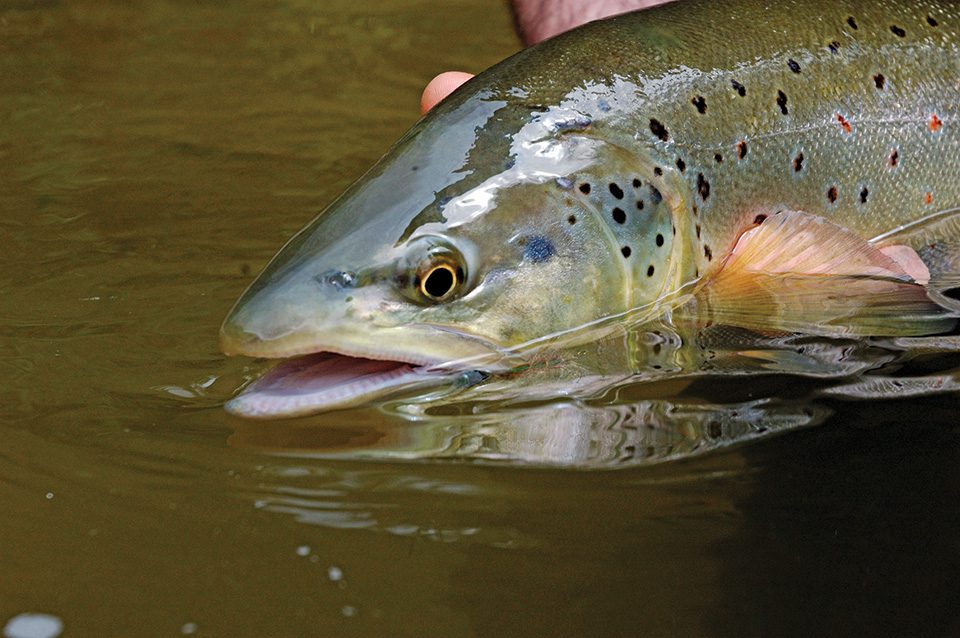By Jacob Milholland
October is a special month in the mountains. Autumn colors and cooler weather signal it’s time to head back to trout water. Hunting a trophy brown trout is what fall is all about. These fish can be caught nymphing a big stonefly or drifting an October caddis, but the old adage, “big bait, big fish,” holds true. Streamer fishing is a surefire way to try and target these old brutes.
Streamers are flies that imitate forage such as baitfish, crawfish, sculpin, other trout or even mice. While the common way to fish a streamer is to enact action by “stripping” or pulling the fly line, streamers can be dead drifted, jigged or swung. There is no wrong way to fish streamers, but the goal is to make the fly look like the real thing.
Equipment: We fish heavier rods, tippets and leaders, as we are targeting larger fish. The flies are more wind resistant or heavily weighted, and the strikes can be more aggressive. Think 5 to 8 weights and 8 to 20-pound fluorocarbon tippet/leader.
A misconception of streamer fishing is that it must be done from a boat on a large river. While a boat is nice for covering ground, wading anglers can adapt these tactics to any size body of water. If you have the option to fish from a boat, multiple rods with different rate-of-fall (ROF) sinking fly lines should be in your arsenal to probe different depths: floating, intermediate (falls at one foot per second), and ROF-6 (falls at six inches per second).
Fly Selection: Ask anyone what they throw, and you’ll get a different answer. It’s hard to go wrong with Woolly Bugger variations—like Sparkle Minnows or Bow River Buggers—any Kelly Galloup pattern or Clouser minnows to start out. Pick staple colors that allow you to adjust to conditions: white, black, bold (yellow or chartreuse) and flashy. Big fish drop their guard in nasty weather, and these can result in the best days on the water.
Tactics: Brown trout ambush their prey, so look for places adjacent to current where fish can sit without expending too much energy. Covering water is paramount to success with a streamer. Likely holding water can produce results immediately, so don’t spend too much time in one spot. You are hunting the largest fish willing to eat the fly, not trying to force inactive fish to feed. Vary your retrieve; sometimes jigging or dead drifting can be better than a strip, or slower or faster retrieves may get a fish to react.
Mental fortitude is just as important as the where and how. You can go hours or even days without seeing a fish follow the fly, but the magic of streamer fishing lies in the take of the fly and the caliber of fish.
Jacob Milholland fishes with Cohutta Fishing Company in Blue Ridge, Ga. Check them out at www.cohuttafishingco.com or call (706) 946-3044.
